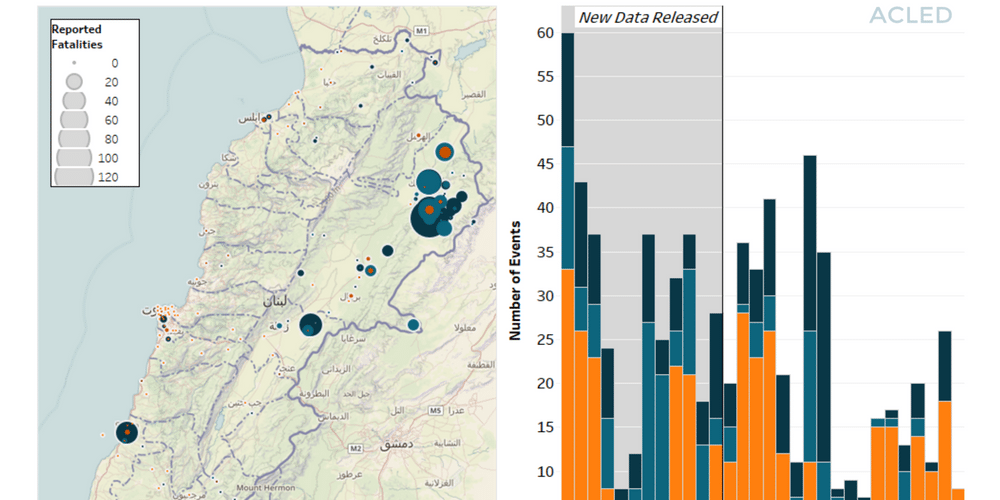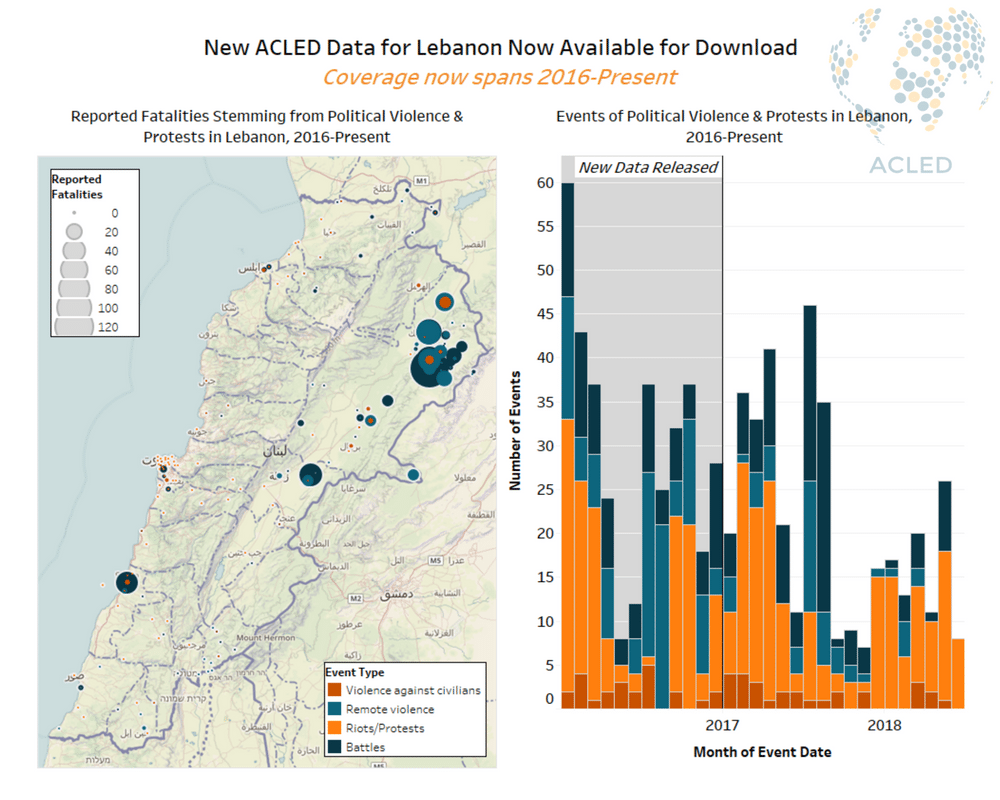During 2016, the war in Syria greatly impacted Lebanon due to the more than one million Syrian refugees entering the country, and the active fighting with Syrian rebel forces along the Syrian-Lebanese border. Multiple suicide bombings in June 2016 in the city of Al-Qaa, allegedly carried out by Syrians, aggravated tensions between Lebanese citizens and Syrian refugees. The large numbers of battles and remote violence in 2016 as compared to 2017-2018 occurred primarily in the region surrounding Arsal where Lebanese military forces shelled locations of the Islamic State (IS) and the Al Nusra Front (JFS) on an almost daily basis. Additionally, frequent demonstrations were reported in Lebanon during 2016, most of which occurred in Beirut. The most active groups participating in these demonstrations included Palestinian refugees, labour groups, and environmental activists, including the “You Stink” and “We Want Accountability” movements.
Meanwhile, Lebanon broke its political deadlock in 2016 following a two-year stalemate during which no presidential candidate was able to achieve the required two-thirds majority vote in parliament. Turmoil surrounding Lebanese elections finally came to a close on October 31, 2016 when the parliament elected President Michael Aoun in the 46th round of voting. While a higher numbers of conflict events were reported in 2016 relative to later years, these events remained largely clustered in a few locations while relatively few events were reported across the rest of the country considering the political problems facing the country over this period.
AnalysisCivilians At RiskConflict MonitoringPressRemote ViolenceRioting And ProtestsViolence Against Civilians







